I started the running week on Tuesday with 10km comprising a 1.5km warm-up, then 3 lots of 2km brisk with 500 metres recoveries, concluding with a 1.5km jog.
Wednesday saw me setting out before dawn from Whittlesford station for a 13km slow run along the cycle paths that head in all four directions from the A505/A1301 roundabout, before heading into London for some work meetings.
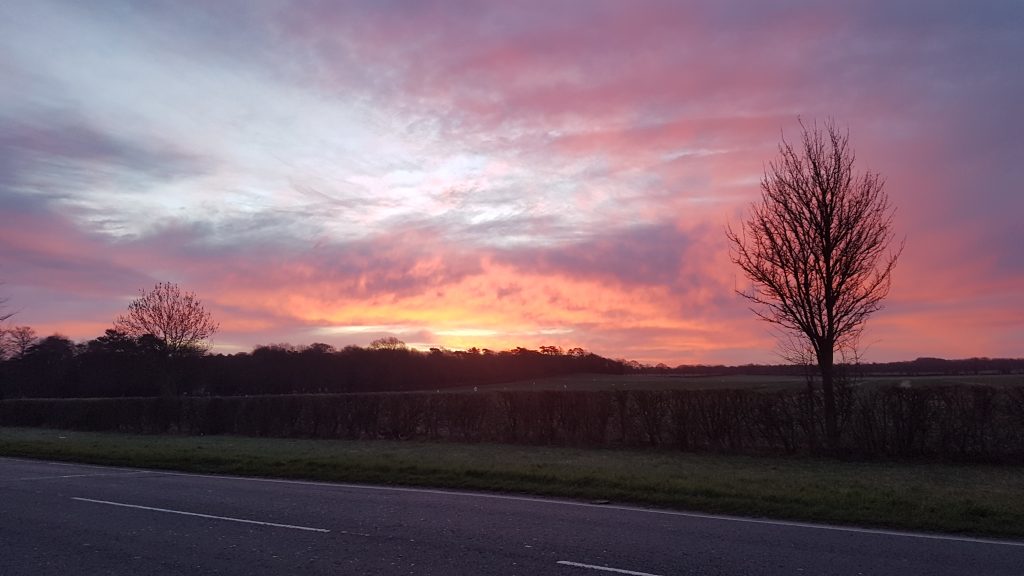
Thursday was a gentle 5km, starting a small taper before Saturday.
Saturday was my second one in a row with no parkrun, but having tried to enter the Cambridge Half-Marathon too late (it was full when I tried in December), I plumped for a Half in Victoria Park in east London which was on the Saturday, but worth a minor tweak to the marathon training plan, now 6 weeks from the big day.
I arrived at the park in good time, collected my number, and made use of the toilet facilities – no soap, only cold water, so I was glad I’d brought my own hand sanitiser. I pinned on my number and attached my timing chip to my shoe, and now still had 45 minutes before the start, with the challenge of keeping warm. As the morning was colder than I’d expected, and I would be running in t-shirt and shorts, I chose to keep my fleece on for as long as possible and so delayed handing in my bag. That made a warm-up jog less practical, so I compromised by walking part of the course – it was billed as 6.5 laps, meaning 7 times past the water station.
I went and found the water station, and from there walked what would be the rest of the route after passing the water station for the seventh time. I knew the last bit of the route would be rather twisty with a danger of brief confusion – the point to turn off the main laps was clear, and then there were several bold yellow arrows which matched my mental picture of the route, then apparently no signage just as my mental picture went fuzzy. This was exactly what I wanted to avoid in my 21st kilometre later on when my brain would have less access to blood supply. I walked on, slightly uncertainly, and found a black sign with a small arrow not visible from a distance (black for half-marathon), a major contrast to the several yellow arrows, at the end of the path. I then followed the rest of the route back to the start/finish area, well satisfied with my exploration.
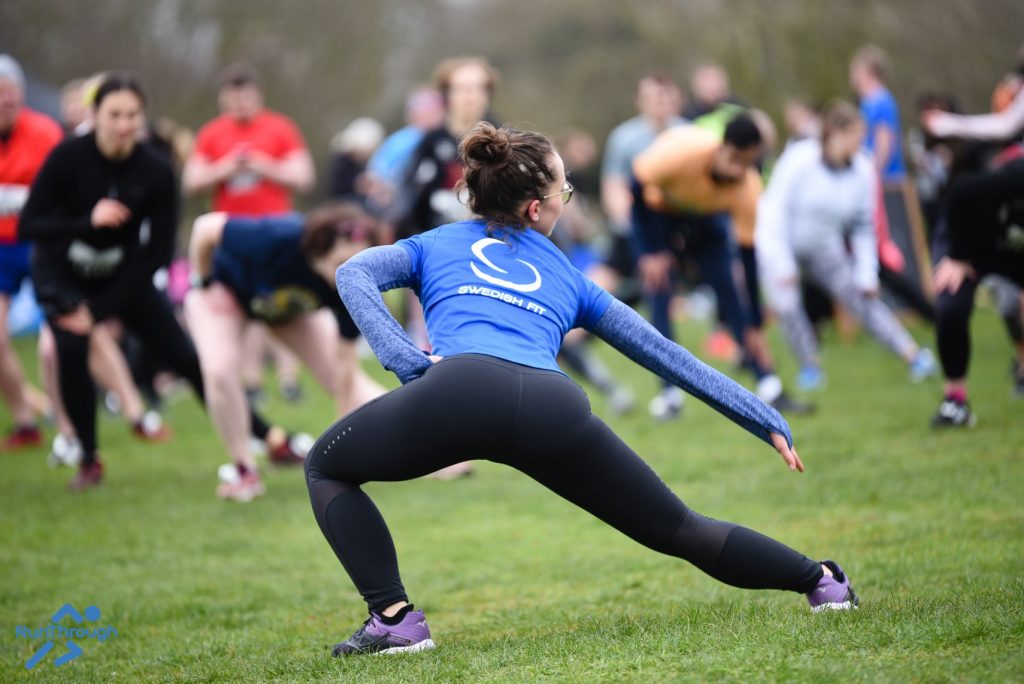
I dropped off my bag and did some gentle warm-up exercises, then we were called to the start area in order of expected finish time. We were soon off, but I hadn’t gone more than a few hundred metres before I found myself in a new situation for me, being interviewed on mobile phone camera by a fellow runner, with a thick Italian accent. I struggled to understand her questions due to the accent, and then, while running, to come up with good answers to questions such as “What are you running from?”. That novel interlude didn’t last long, and then it was time to focus on my running.
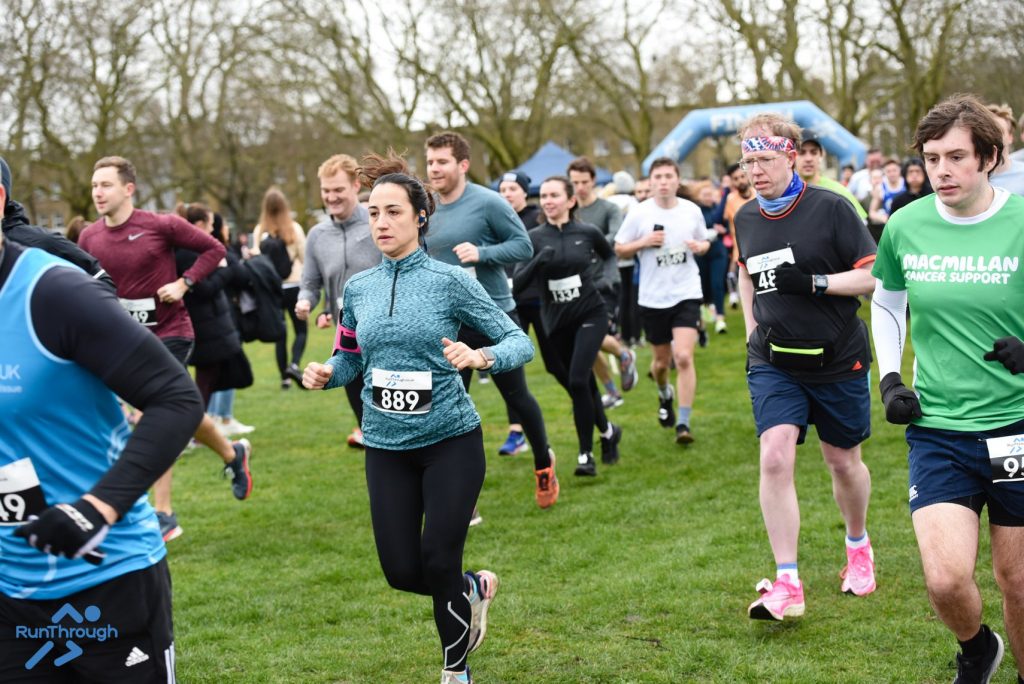
My original training plan had said to aim for sub-2h03 today, as being broadly equivalent in effort to my 4h30 marathon objective. After the success of the race at Dorney Lake, I’d decided to aim for sub-1h57, to beat the Dorney Lake time of 13 days earlier by two minutes or so, making for a target pace today of about 5:32 per kilometre.
However, I found my legs naturally turned over a little faster than that, and I decided to see how it went. Each time I went past the water station, at about two-mile intervals, I slowed to a walk to drink properly, but otherwise ran throughout. The lapped course, and combination of half-marathon, 10km and 5km distances being run, meant that it was a little crowded in places, especially in the middle third, but generally I was able to run freely.
I reached 10km in 54:04, an average pace of 5:24. This was ahead of my target for today, but also ahead of my half-marathon PB pace. I felt good, though understandably I didn’t have the excess of energy that I’d had at Dorney Lake when I’d run the first half so much slower. Today I pushed the pace a little further after half way, but decided that “a little” was the most I could manage, but that was still exciting, knowing I was heading for a PB, and a significantly better PB too. Having run the first half at 5:24/km, I eventually managed the second half at 5:18/km. At Dorney Lake, I was almost flying at the end; today I was really working very hard for only the most marginal of accelerations. I crossed the line and the clock stopped for me at 1:52:03, knocking 3½ minutes off my PB, more than 6 minutes off Eton Dorney, and 23 minutes off Vienna, my pre-marathon Half from last year (when I was injured and under-trained) – amazing improvements.
I allowed myself briefly to collapse to the ground; two concerned onlookers dashed off to get me water, and a third and fourth helped me back to my feet after a few seconds of recovery.
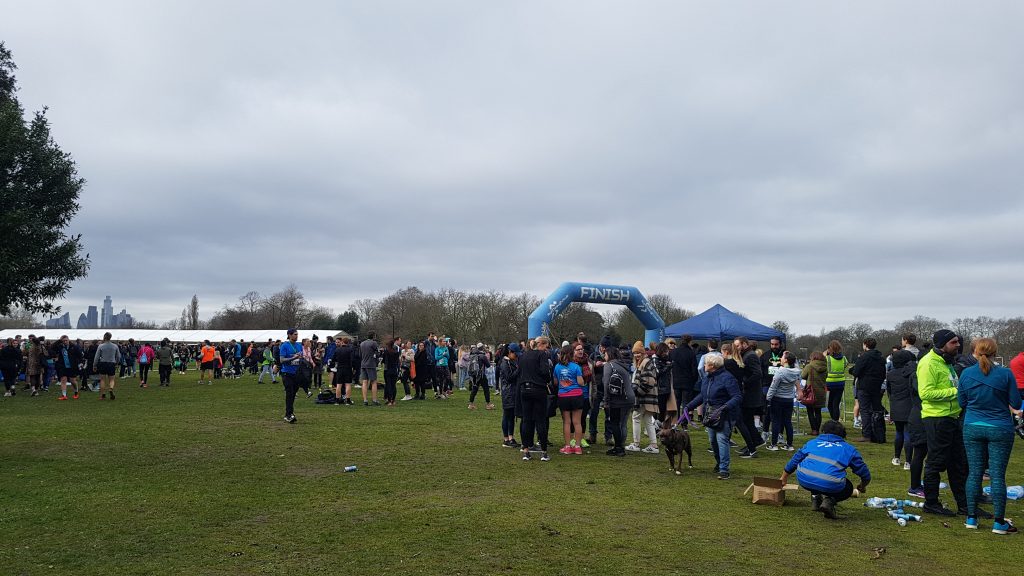
I grabbed a banana and other goodies, then fetched my bag and drank my recovery drink, and began to wend my way home – with a mere five loo stops en route.
My legs were a little weary afterwards, but they didn’t stop me taking the dogs for an hour’s walk by the Orwell in the afternoon, and on Sunday Brindley and I had an 8km run in the King’s Forest.
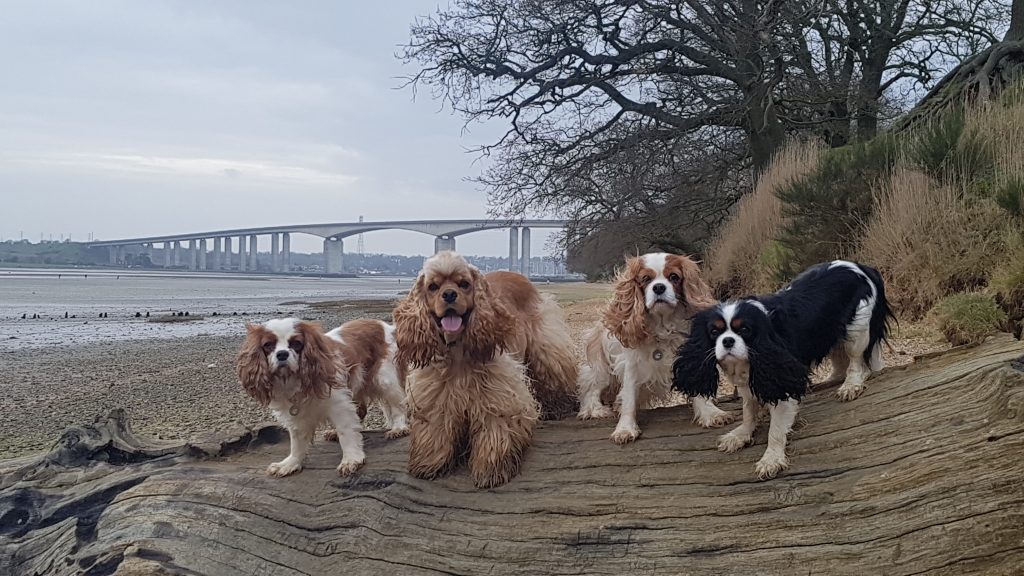
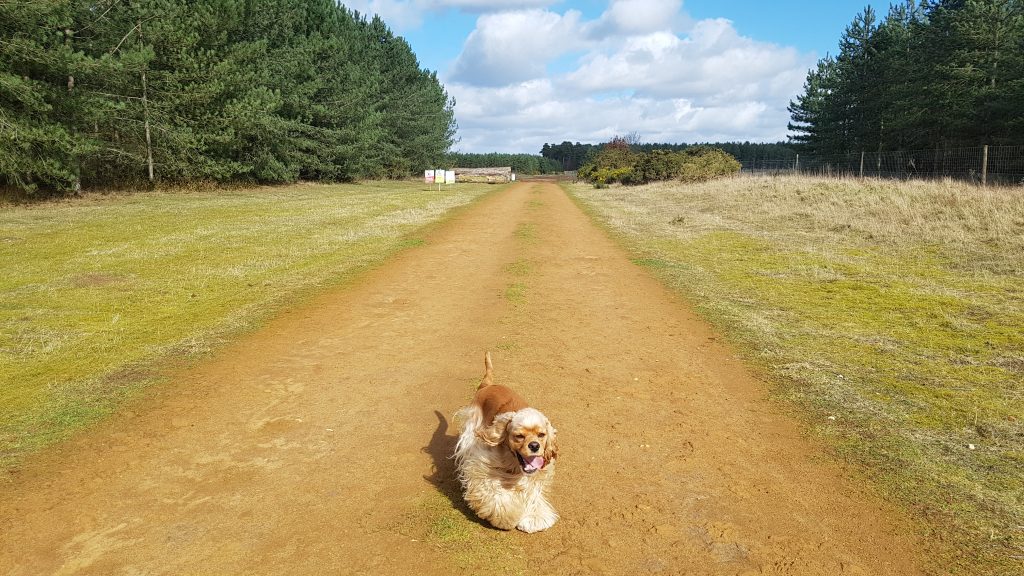
So, 1:52:03, eh? My Garmin measured my route at 20.93km, but I don’t give that huge credence – 1% accuracy on a wrist GPS device is still good, and there didn’t seem to be a predominance of other runners showing under-distance, with a number showing over distance, so I’m quite happy that it should “count” as a half-marathon. Even if one extrapolates to 21.0975km, the time would still have been a big PB.
For what it’s worth, my running calculator says that pace is equivalent effort to a 4:04:48 marathon, which adds to my confidence that I can get my 4:29 time. I will try hard not to go too fast for the first 30km – if I still feel I have scope to accelerate after over 3 hours, I might allow myself to speed up, but I’m not going to let excessive pace dreams spoil this marathon – “goal A” remains under 4h30.
Meanwhile, the Covid-19 pandemic is growing, with cases in the UK and other European countries doubling every two or three days. Responses in respect of public gatherings seem to vary: Germany has now joined several other countries in banning large gatherings, and Italy has imposed a nominal (though so far extremely porous) quarantine on 16 million people. The UK response has been that banning large sporting events has minimal benefit, and that the decisions made elsewhere are political rather than scientific ones. Whether that will last six weeks, remains to be seen.
Sophie Raworth tweeted very aptly:
20 miler ✔️ Not easy training for a marathon when you’re no longer entirely sure if it’s happening 🤞 pic.twitter.com/EJPKobjK0q
— Sophie Raworth (@Raworthontherun) March 7, 2020
The Marathon des Sables is the latest high-profile running event to be cancelled, along with many major marathons on the Continent, following on from Tokyo being restricted to a couple of hundred elite runners rather than its normal mass-participation nature.
The Boston (UK) Marathon has filled up with a surge of runners anxious that big UK events such as Manchester, London and Brighton could be cancelled but Boston might survive. Meanwhile the Los Angeles Marathon went ahead on Sunday – with some bizarre advice from race officials that people keep 6 feet apart, advice that is utterly impractical in a mass-participation race. An article in Popular Mechanics calculates that the start line would have to be over 3 miles long to fit in everyone 6 feet apart, without addressing the narrowest pinch-point of the route, nor that if we adopt such packing techniques, no-one would be able to overtake because they’d need a gap 12 feet wide to go through.
In the meantime, training goes on, and fingers are kept crossed, but I’m mentally developing a plan for 19 April with Lucy as my crowd and water station, probably on the prom at Felixstowe. If she were just east of the pier, then there could be a 3km loop to the NE, refreshments, then a 3km loop to the SW, refreshments, etc, all 7 times. I think having a back-up plan will make it easier to cope with the disappointment if the race is cancelled/postponed, and to continue with the training anyway.
